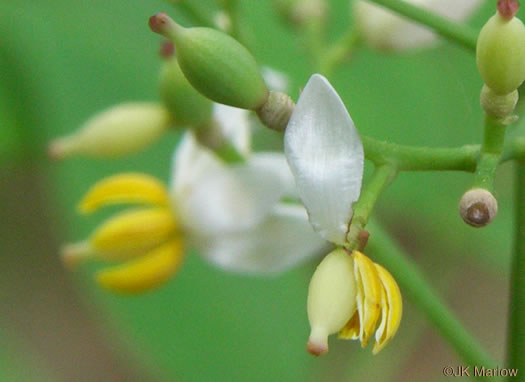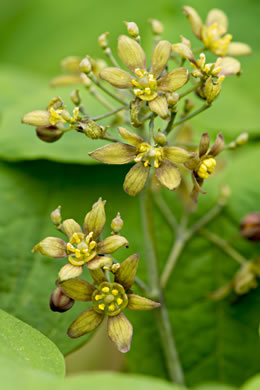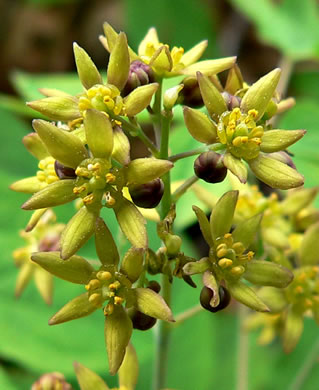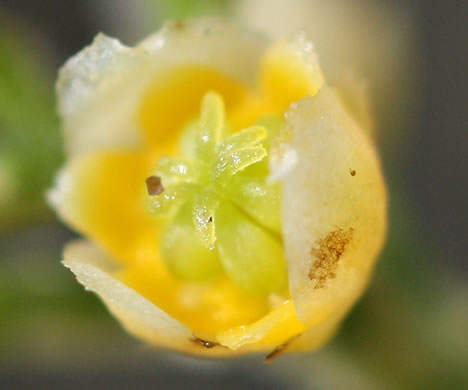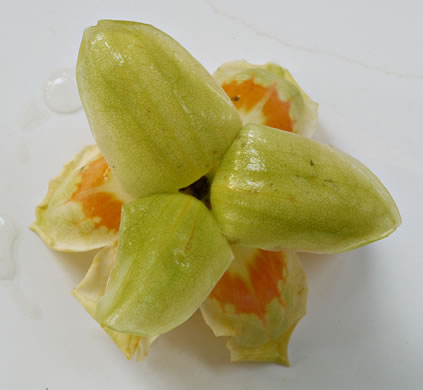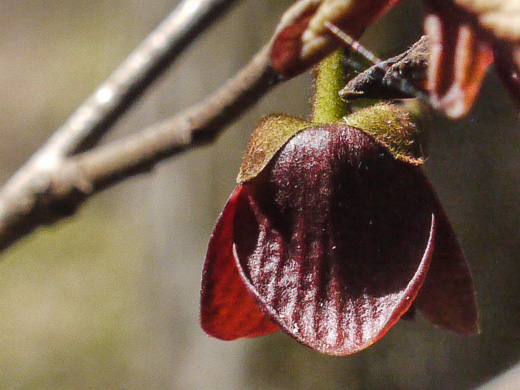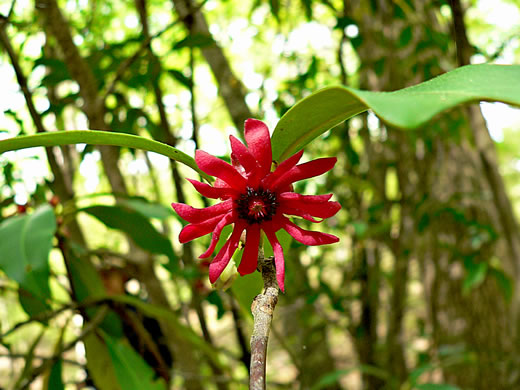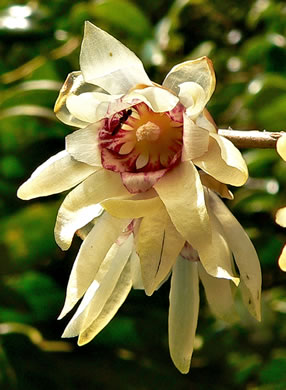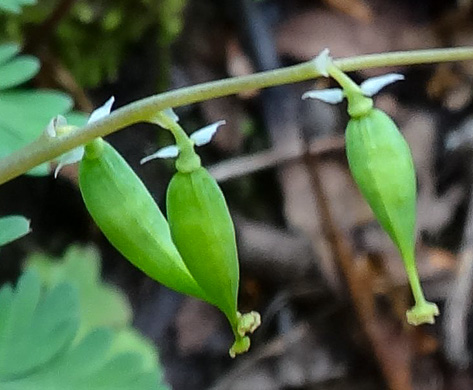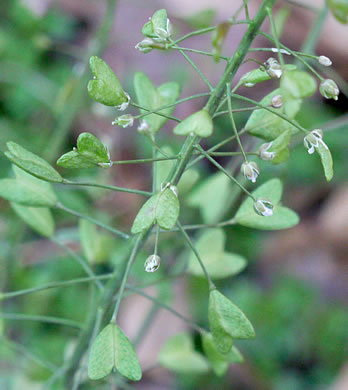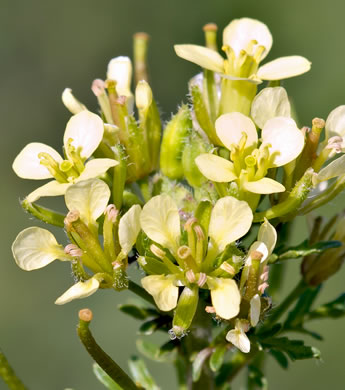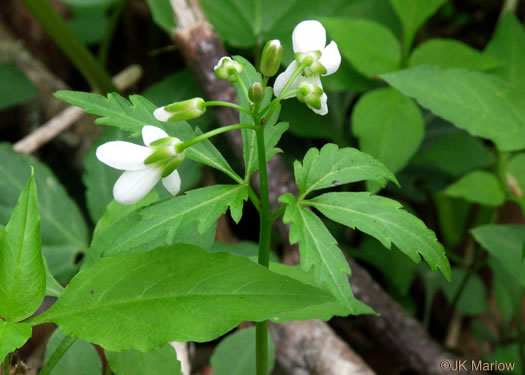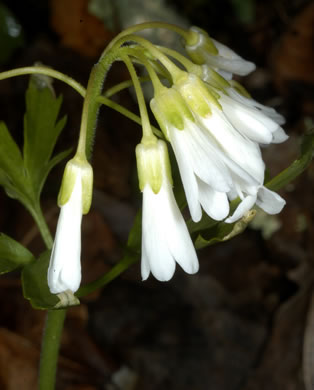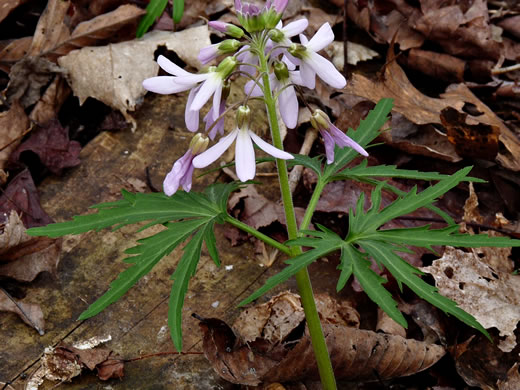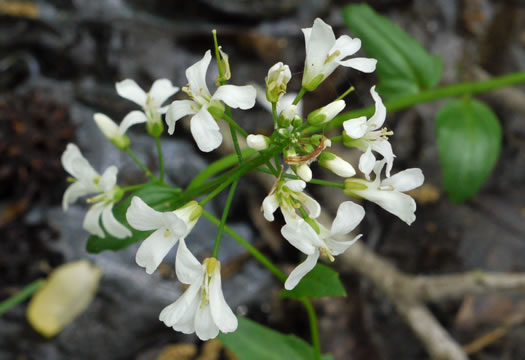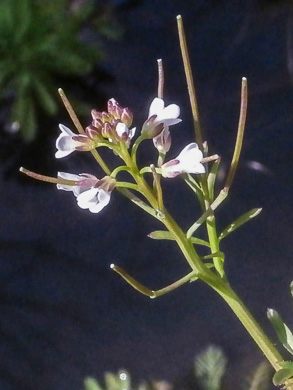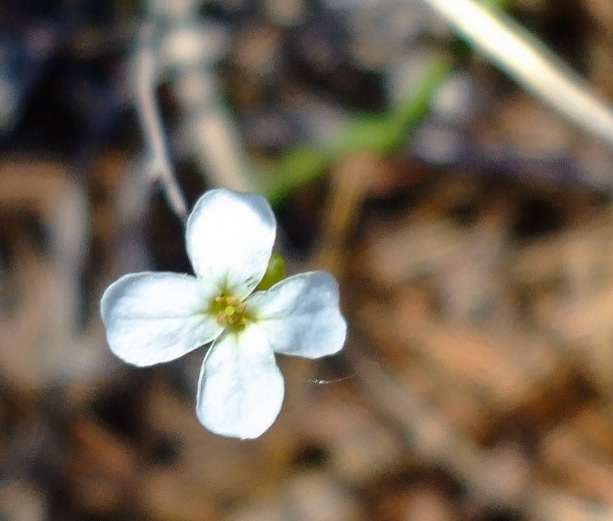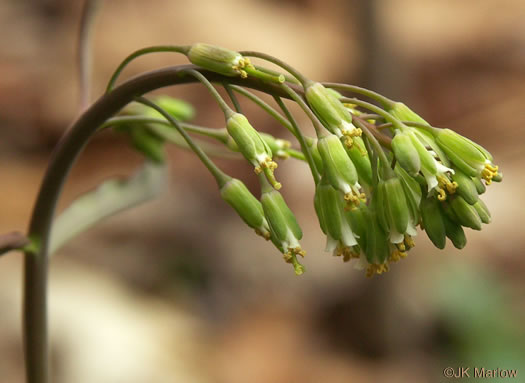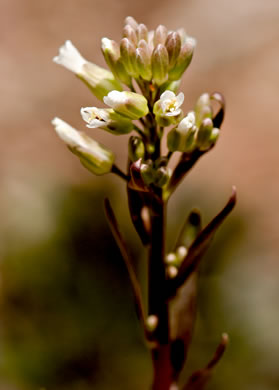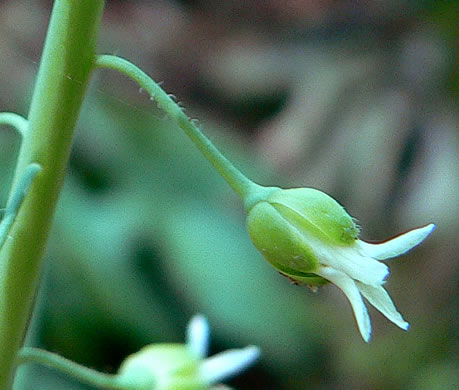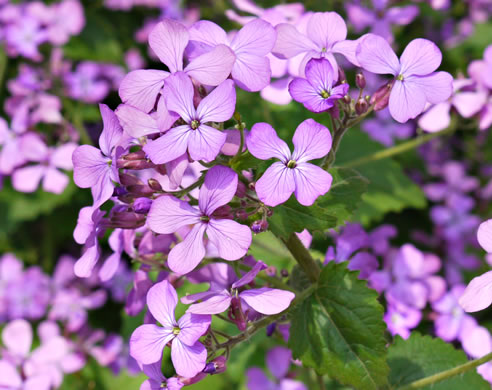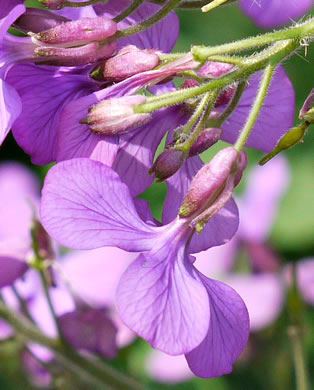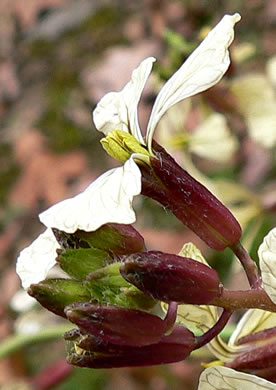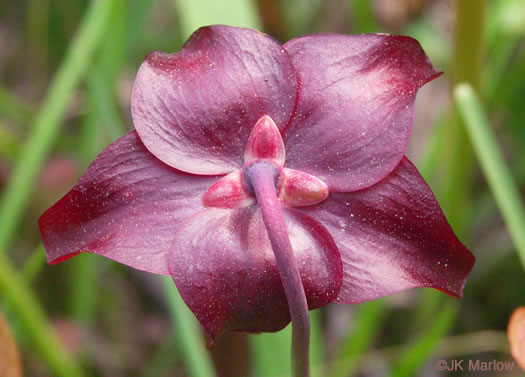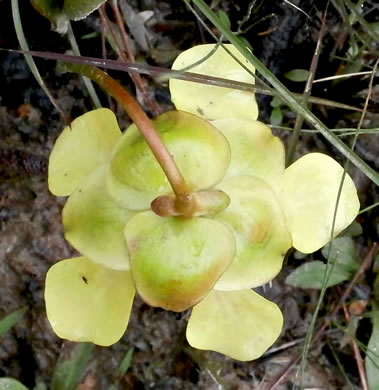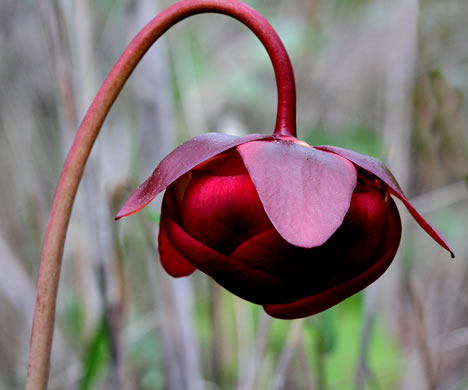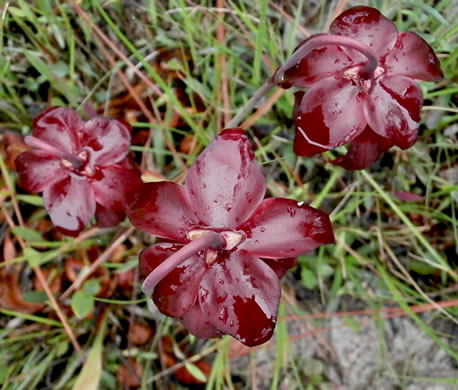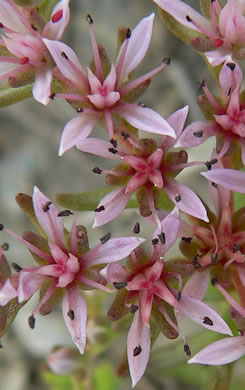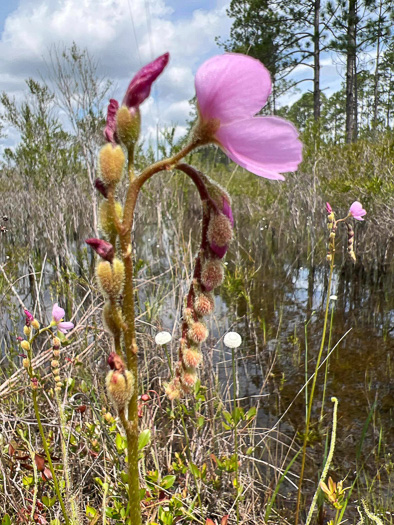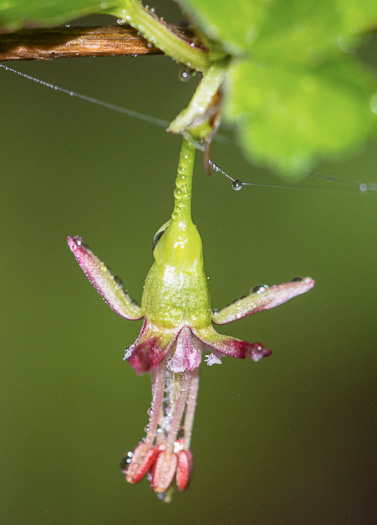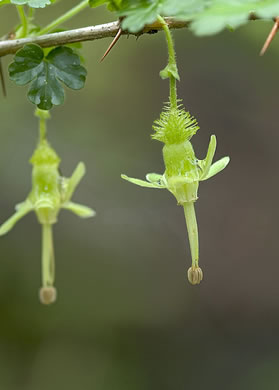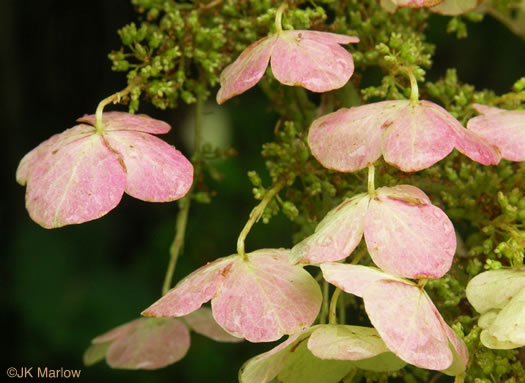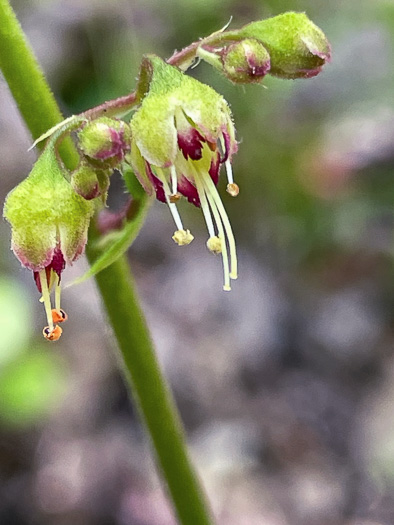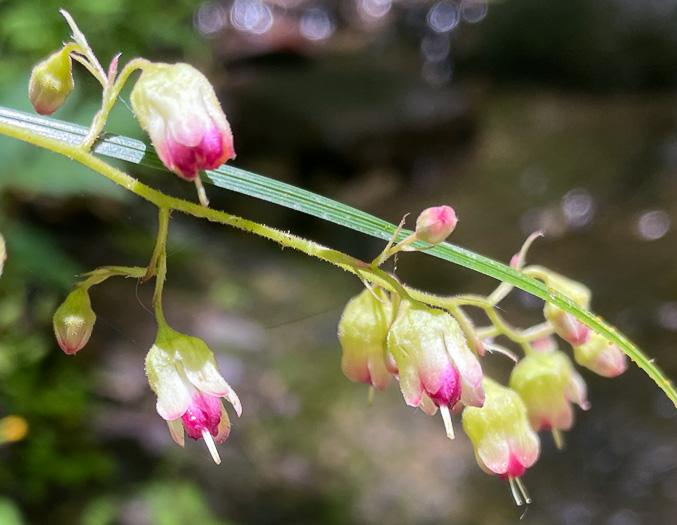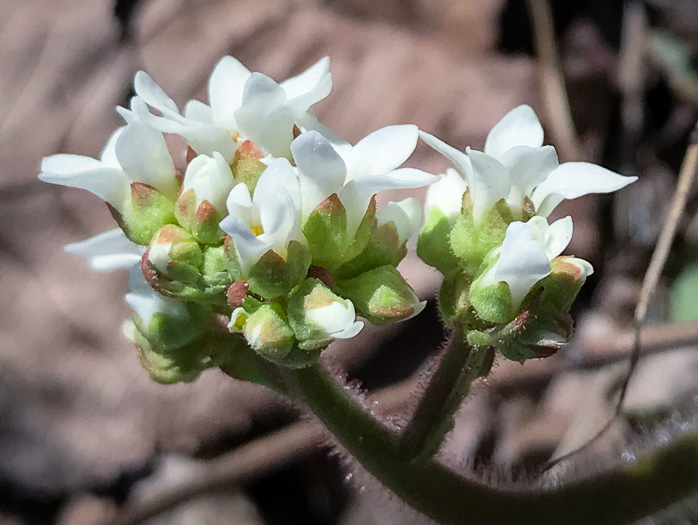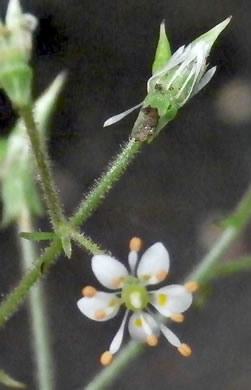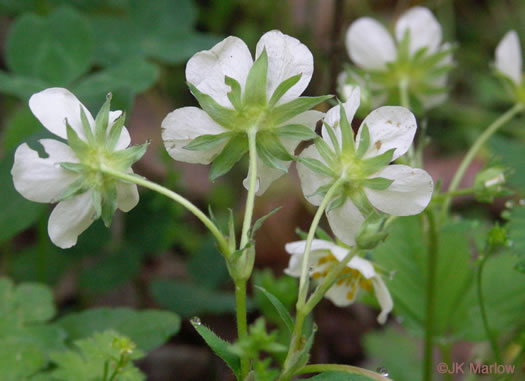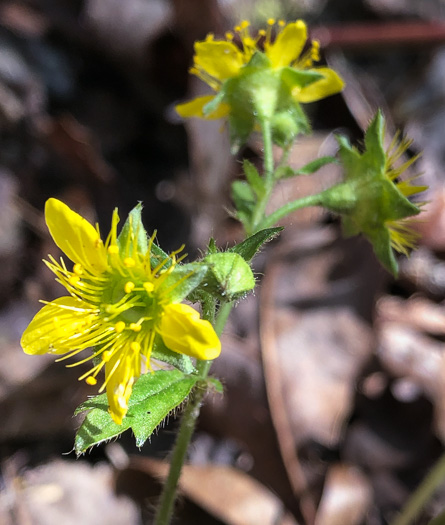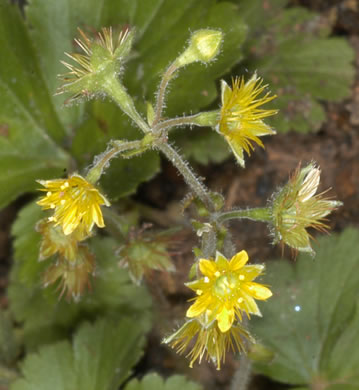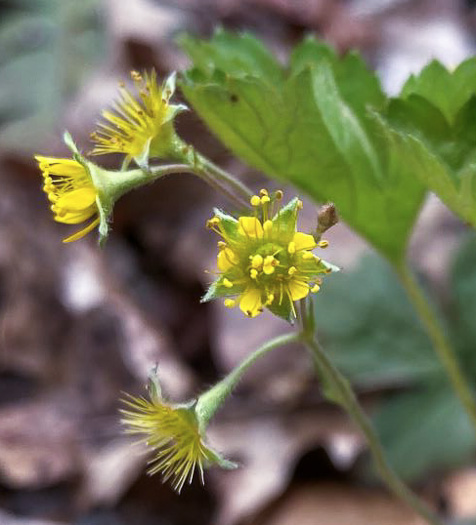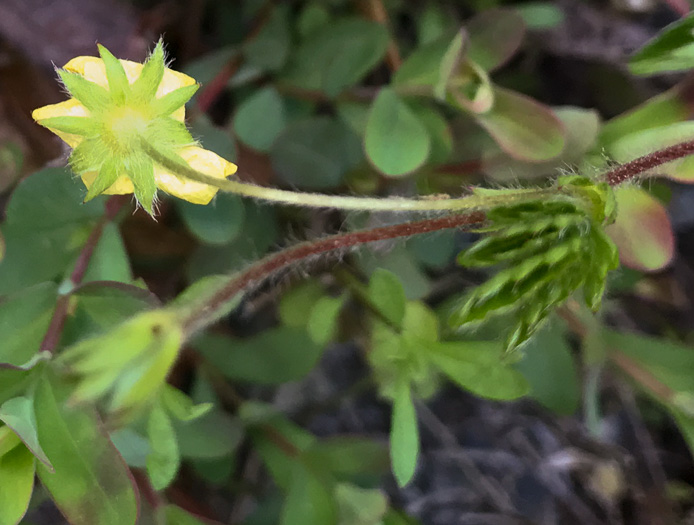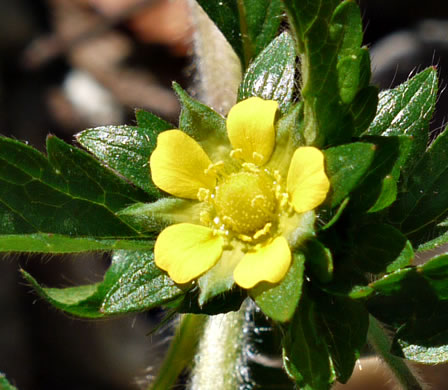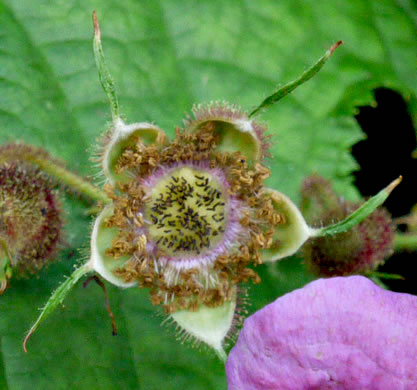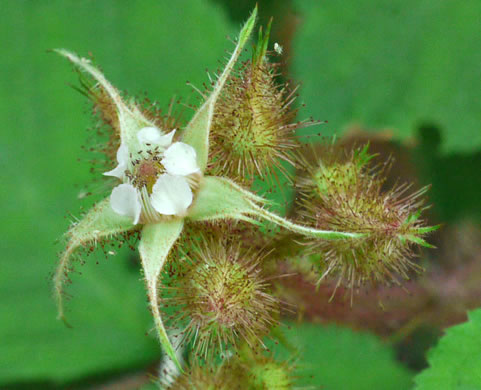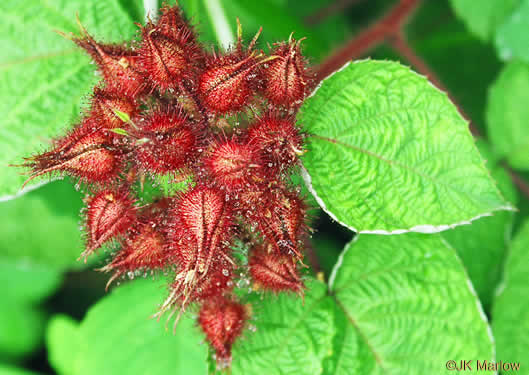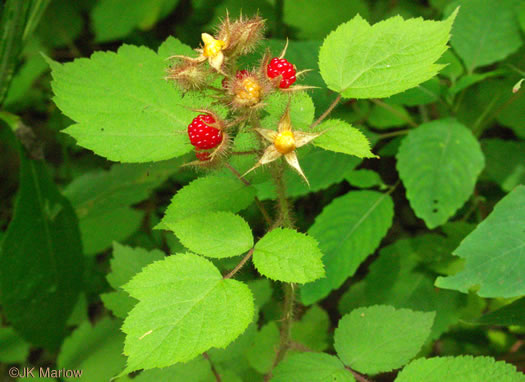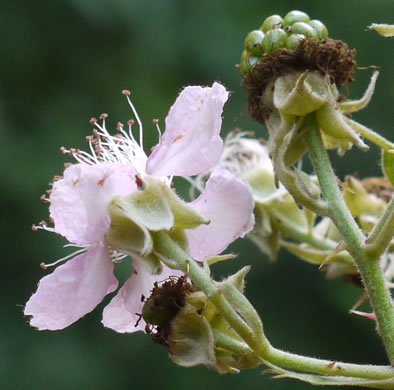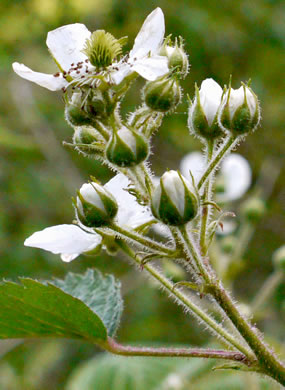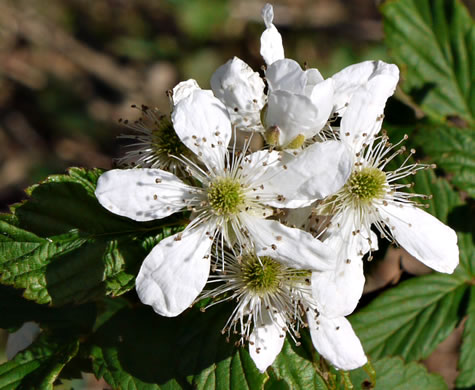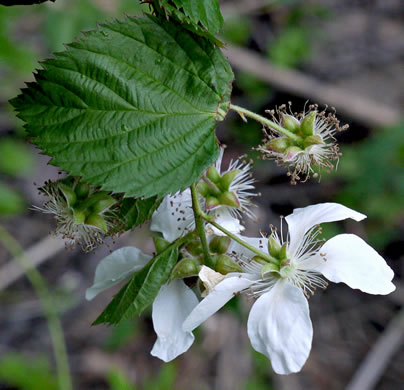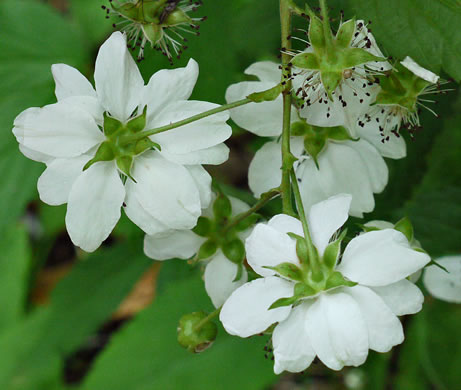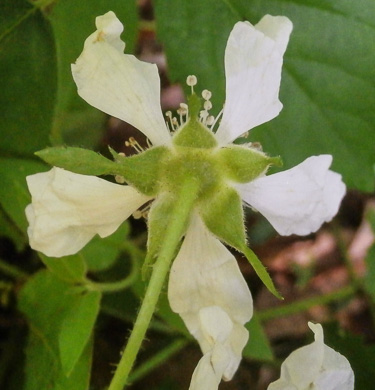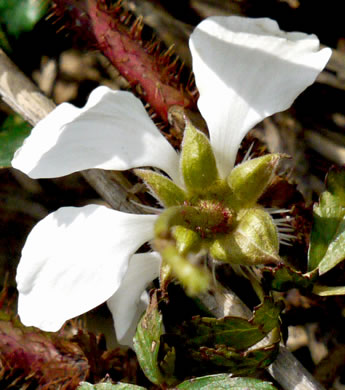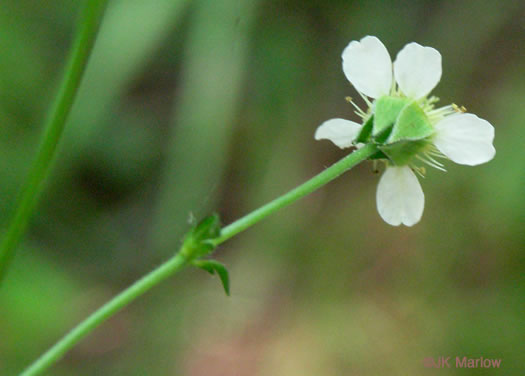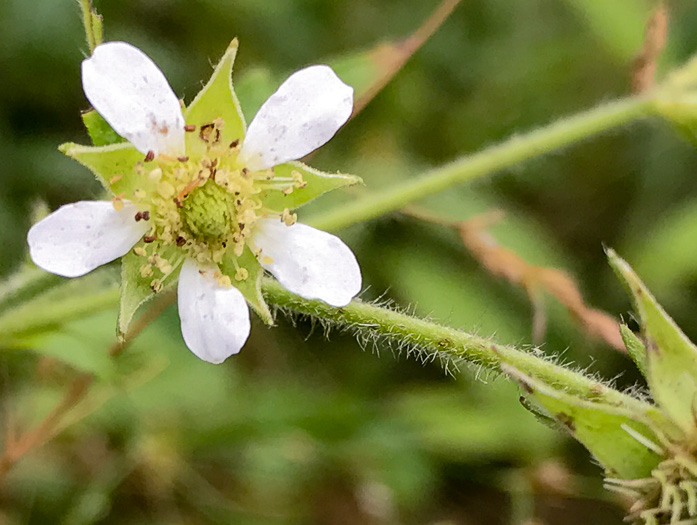Your search found 419 image(s) illustrating the term "sepals." For a written explanation, click on "sepals" in the Glossary.
PAGE 1 PAGE 2 PAGE 3 PAGE 4 PAGE 5 PAGE 6 PAGE 7
To see larger pictures, click or hover over the thumbnails.
To go to the plant's detail page, click its name.
 Nandina,
Nandina domestica
Nandina,
Nandina domestica
All perianth parts caducous [falling off early]; sepals & petals intergrading, per Flora of North America.
 Common Blue Cohosh,
Caulophyllum thalictroides
Common Blue Cohosh,
Caulophyllum thalictroides
The six petal-like sepals are yellow-green to purple-green, per Wildflowers of Tennessee, the Ohio Valley, and the Southern Appalachians (Horn, Cathcart, Hemmerly, & Duhl, 2005).
 Common Blue Cohosh,
Caulophyllum thalictroides
Common Blue Cohosh,
Caulophyllum thalictroides
True petals are the small yellowish glands at the base of petaloid sepals, per Wildflowers of the Southern Mountains (Smith, 1998).
 Umbrella-leaf,
Diphylleia cymosa
Umbrella-leaf,
Diphylleia cymosa
Unlike most other dicots, the sepals, petals & stamens number 6 each, per Wildflowers of the Eastern United States (Duncan & Duncan, 1999).
 Carolina Moonseed,
Nephroia carolina
Carolina Moonseed,
Nephroia carolina
Sepals and petals 1-2mm long, per Vascular Flora of the Carolinas (Radford, Ahles, & Bell, 1968).
 Tulip-tree,
Liriodendron tulipifera var. tulipifera
Tulip-tree,
Liriodendron tulipifera var. tulipifera
Sepals 3, reflexed. Petals 6, in two rows, per Trees of the Southeastern United States (Duncan & Duncan, 1988).
 Hybrid Pawpaw,
-
Hybrid Pawpaw,
-
Peduncle rusty pubescent, 6-12mm long. Sepals densely rusty pilose, per A New Hybrid of Asimina (Annonaceae) Based on Morphological and Ecological Data (Horn, 2017).
 Florida Star-anise,
Illicium floridanum
Florida Star-anise,
Illicium floridanum
Petals and sepals indistinguishable, per Native Trees of the Southeast, An Identification Guide (Kirkman, Brown, & Leopold, 2007).
 Wintersweet,
Chimonanthus praecox
Wintersweet,
Chimonanthus praecox
Blossoms 1" wide; outer sepals pale yellow, inner sepals chocolate-colored, per The Southern Living Garden Book.
 Dutchman's Britches,
Dicentra cucullaria
Dutchman's Britches,
Dicentra cucullaria
Sepals widely ovate-lanceolate, 2-4mm long. Capsule ellipsoid, 8-14mm long, per Vascular Flora of the Carolinas (Radford, Ahles, & Bell, 1968).
 Common Shepherd's Purse,
Capsella bursa-pastoris
Common Shepherd's Purse,
Capsella bursa-pastoris
Sepals green or reddish (margins membranous), per Flora of North America.
 Common Dog-mustard,
Erucastrum gallicum
Common Dog-mustard,
Erucastrum gallicum
Sepals sparsely hispid apically; petals white to pale yellow, per Flora of North America.
 Broadleaf Toothwort,
Cardamine diphylla
Broadleaf Toothwort,
Cardamine diphylla
Four sepals, per Vascular Flora of the Carolinas (Radford, Ahles, & Bell, 1968).
 Eastern Slender Toothwort,
Cardamine angustata
Eastern Slender Toothwort,
Cardamine angustata
Four sepals, per Vascular Flora of the Carolinas (Radford, Ahles, & Bell, 1968).
 Dissected Toothwort,
Cardamine dissecta
Dissected Toothwort,
Cardamine dissecta
Four sepals, per Vascular Flora of the Carolinas (Radford, Ahles, & Bell, 1968).
 Cutleaf Toothwort,
Cardamine concatenata
Cutleaf Toothwort,
Cardamine concatenata
Four sepals, per Vascular Flora of the Carolinas (Radford, Ahles, & Bell, 1968).
 Bulbous Bittercress,
Cardamine bulbosa
Bulbous Bittercress,
Cardamine bulbosa
Green sepals fade to yellow after flowering, per Wildflowers of Tennessee, the Ohio Valley, and the Southern Appalachians (Horn, Cathcart, Hemmerly, & Duhl, 2005).
 Pennsylvania Bittercress,
Cardamine pensylvanica
Pennsylvania Bittercress,
Cardamine pensylvanica
Sepals oblong, lateral pair not saccate basally, per Flora of North America.
 Lyreleaf Rockcress,
Arabidopsis lyrata ssp. lyrata
Lyreleaf Rockcress,
Arabidopsis lyrata ssp. lyrata
4 white petals, 4 green sepals, several stamens, and a pistil with a short style, per www.illinoiswildflowers.info.
 Common Smooth Rockcress,
Borodinia laevigata
Common Smooth Rockcress,
Borodinia laevigata
Four sepals, slightly shorter than the petals, per Wildflowers of Tennessee, the Ohio Valley, and the Southern Appalachians (Horn, Cathcart, Hemmerly, & Duhl, 2005).
 Common Smooth Rockcress,
Borodinia laevigata
Common Smooth Rockcress,
Borodinia laevigata
Flowers ascending at anthesis; sepals glabrous; petals white, 3-5mm, per Flora of North America.
 Missouri Rockcress,
Borodinia missouriensis
Missouri Rockcress,
Borodinia missouriensis
Flowers ascending at anthesis; sepals glabrous; petals white, 5-10mm, per Flora of North America.
 Canada Rockcress,
Borodinia canadensis
Canada Rockcress,
Borodinia canadensis
Sepals form a round cup at flower base. Petals spreading & about 1.5x longer, per www.minnesotawildflowers.info.
 Money Plant,
Lunaria annua
Money Plant,
Lunaria annua
Petals 4, usually purple or lavender, obovate, much longer than sepals, per Flora of North America.
 Money Plant,
Lunaria annua
Money Plant,
Lunaria annua
Sepals cucullate [hood-like], two linear and two broadly oblong-elliptic, per Flora of North America.
 Arugula,
Eruca vesicaria ssp. sativa
Arugula,
Eruca vesicaria ssp. sativa
Sepals (sometimes persistent), erect, oblong [linear], (connivent), per Flora of North America.
 Yellow Pitcherplant,
Sarracenia flava
Yellow Pitcherplant,
Sarracenia flava
Flowers strongly ill-scented; sepals yellowish-green; style-disk yellow-green, per Flora of North America.
 Mountain Sweet Pitcherplant,
Sarracenia jonesii
Mountain Sweet Pitcherplant,
Sarracenia jonesii
Flowers have 5 persistent sepals, per Wildflowers of the Southern Mountains (Smith, 1998).
 Hooded Pitcherplant,
Sarracenia minor var. minor
Hooded Pitcherplant,
Sarracenia minor var. minor
Sepals yellowish green; petals yellow, distal portion narrowly obovate, per Flora of North America.
 Southern Purple Pitcherplant,
Sarracenia purpurea var. venosa
Southern Purple Pitcherplant,
Sarracenia purpurea var. venosa
Five persistent sepals, per Wildflowers of the Southern Mountains (Smith, 1998).
 Parrot Pitcherplant,
Sarracenia psittacina
Parrot Pitcherplant,
Sarracenia psittacina
Sepals maroon, per Flora of North America.
 Widow's Cross,
Sedum pulchellum
Widow's Cross,
Sedum pulchellum
Sepals erect, distinct, light green, linear-lanceolate, unequal, per Flora of North America.
 Tracy's Sundew,
Drosera tracyi
Tracy's Sundew,
Drosera tracyi
Scapes glabrous. Pedicels & sepals glandular-pilose. Petals broadly ovate, apical margins erose, per Flora of North America.
 Roundleaf Gooseberry,
Ribes rotundifolium
Roundleaf Gooseberry,
Ribes rotundifolium
Green to reddish sepals, white to pinkish petals, and protruding stamens, per Wildflowers & Plant Communities of the Southern Appalachian Mountains and Piedmont (Spira, 2011).
 Miccosukee Gooseberry,
Ribes echinellum
Miccosukee Gooseberry,
Ribes echinellum
Greenish flowers w 5 small petals, 5 spreading sepals, long exserted stamens, per Wildflowers & Plant Communities of the Southern Appalachian Mountains and Piedmont (Spira, 2011).
 Oakleaf Hydrangea,
Hydrangea quercifolia
Oakleaf Hydrangea,
Hydrangea quercifolia
Sterile flowers' greatly enlarged sepals begin white, turning pink-purplish, per Forest Plants of the Southeast and Their Wildlife Uses (Miller & Miller, 2005).
 Purple Alumroot,
Heuchera hispida
Purple Alumroot,
Heuchera hispida
Petals purple or pink, wider than sepals, margins fimbriate, per Flora of North America.
 Marbled Alumroot,
Heuchera pubescens
Marbled Alumroot,
Heuchera pubescens
Sepals about as long as petals, stamens not exserted, style conspicuously longer than petals, per Wildflowers of the Southern Mountains (Smith, 1998).
 Early Saxifrage,
Micranthes virginiensis
Early Saxifrage,
Micranthes virginiensis
Sepals erect to ascending (even in fruit), ovate to triangular, per Flora of North America.
 Brook Lettuce,
Micranthes micranthidifolia
Brook Lettuce,
Micranthes micranthidifolia
Calyx tube absent; sepals 1.5-2.5mm long, per Vascular Flora of the Carolinas (Radford, Ahles, & Bell, 1968).
 Wild Strawberry,
Fragaria virginiana
Wild Strawberry,
Fragaria virginiana
5 sepals interspersed and united with 5 similar but shorter & narrower bracts, per Vascular Flora of the Carolinas (Radford, Ahles, & Bell, 1968).
 Northern Barren Strawberry,
Waldsteinia fragarioides
Northern Barren Strawberry,
Waldsteinia fragarioides
Petals 4-10mm (longer than the sepals), and the spread flower ~ 3/4" across, per Vascular Plants of North Carolina.
 Southern Barren Stawberry,
Waldsteinia doniana
Southern Barren Stawberry,
Waldsteinia doniana
Petals 2.5-4mm long (about as long as the sepals), 1-1.5mm wide, per Weakley's Flora.
 Piedmont Barren Strawberry,
Waldsteinia lobata
Piedmont Barren Strawberry,
Waldsteinia lobata
The green, triangular, spreading sepals are often longer than the petals, per Field Guide to the Rare Plants of Georgia (Chafin, 2007).
 Old Field Cinquefoil,
Potentilla simplex
Old Field Cinquefoil,
Potentilla simplex
Epicalyx bractlets linear to narrowly lanceolate, often larger than sepals, per Flora of North America.
 Rough-fruited Cinquefoil,
Potentilla recta
Rough-fruited Cinquefoil,
Potentilla recta
Sepals 5-10mm long, acute, per Vascular Flora of the Carolinas (Radford, Ahles, & Bell, 1968).
 Strawberry-weed,
Potentilla norvegica
Strawberry-weed,
Potentilla norvegica
Under the 5 yellow petals & 5 green sepals, there are 5 green bracts, per www.illinoiswildflowers.info.
 Purple Flowering-raspberry,
Rubacer odoratum
Purple Flowering-raspberry,
Rubacer odoratum
Sepals triangular-ovate and caudate [that is, with a tail-like appendage], per Vascular Flora of the Carolinas (Radford, Ahles, & Bell, 1968).
 Wineberry,
Rubus phoenicolasius
Wineberry,
Rubus phoenicolasius
Flower petals are white and shorter than the sepals, per Wildflowers of Tennessee (Carman, 2005).
 Wineberry,
Rubus phoenicolasius
Wineberry,
Rubus phoenicolasius
Sepals, covered w red-tipped glandular trichomes, enclose fruit until maturity, per Vascular Flora of the Carolinas (Radford, Ahles, & Bell, 1968).
 Wineberry,
Rubus phoenicolasius
Wineberry,
Rubus phoenicolasius
Fruit red, with five elongated, glandular, yellowish sepals, per Woody Plants of the Blue Ridge (Lance).
 European Blackberry,
Rubus bifrons
European Blackberry,
Rubus bifrons
Sepals elliptic-lanceolate, 6-8mm long, acute to aristate, tomentose, per Vascular Flora of the Carolinas (Radford, Ahles, & Bell, 1968).
 Allegheny Blackberry,
Rubus allegheniensis var. allegheniensis
Allegheny Blackberry,
Rubus allegheniensis var. allegheniensis
Sepals 6-10mm long (or longer), pubescent & often stipitate-glandular, per Vascular Flora of the Carolinas (Radford, Ahles, & Bell, 1968).
 Pennsylvania Blackberry,
Rubus pensilvanicus
Pennsylvania Blackberry,
Rubus pensilvanicus
Flowers about 1" wide, the petals longer than the sepals, per Wildflowers of Tennessee, the Ohio Valley, and the Southern Appalachians (Horn, Cathcart, Hemmerly, & Duhl, 2005).
 Pennsylvania Blackberry,
Rubus pensilvanicus
Pennsylvania Blackberry,
Rubus pensilvanicus
Sepals 4-6mm long, densely pubescent, per Vascular Flora of the Carolinas (Radford, Ahles, & Bell, 1968).
 Smooth Blackberry,
Rubus canadensis
Smooth Blackberry,
Rubus canadensis
Similar to R. argutus, whose sepals are 4-6mm long, densely pubescent, per Vascular Flora of the Carolinas (Radford, Ahles, & Bell, 1968).
 Common Dewberry,
Rubus flagellaris
Common Dewberry,
Rubus flagellaris
Pedicels pubescent, often stipitate-glandular. Sepals densely pubescent, per Vascular Flora of the Carolinas (Radford, Ahles, & Bell, 1968).
 Southern Dewberry,
Rubus trivialis
Southern Dewberry,
Rubus trivialis
Sepals 5-7mm long, pubescent, per Vascular Flora of the Carolinas (Radford, Ahles, & Bell, 1968).
 White Avens,
Geum canadense
White Avens,
Geum canadense
Sepals green, lanceolate, 4-7mm long, acute, spreading to reflexed, per Vascular Flora of the Carolinas (Radford, Ahles, & Bell, 1968).
 White Avens,
Geum canadense
White Avens,
Geum canadense
Flowers about 0.5" wide; 5 rounded petals about equal in length to sepals, per Wildflowers of Tennessee, the Ohio Valley, and the Southern Appalachians (Horn, Cathcart, Hemmerly, & Duhl, 2005).

